#gay liberation front
Text
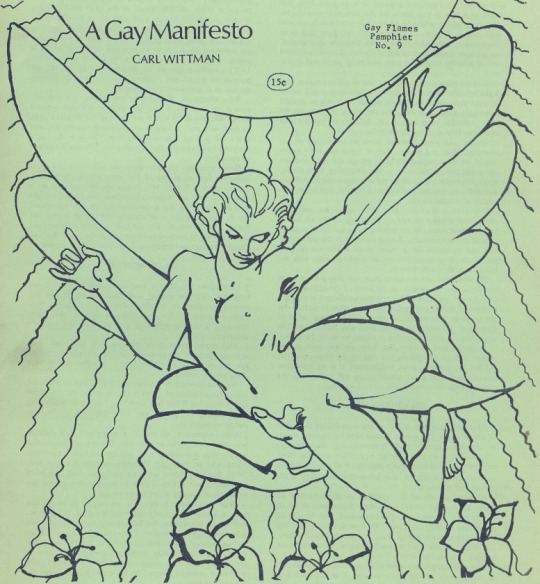
From Gay Flames, a series of pamphlets from members of the GLF, published Sept, 1970
#queer history#queer art history#1970s#1970s art#1970s gay#gay liberation front#gay flames pamphlet#gay fairy#cosmo talks
5K notes
·
View notes
Text

112 notes
·
View notes
Text
Something I do grieve a little bit, especially as I study queer history and connect deeper with queer ancestors, is that the LGBTQ+ community is now almost entirely online and/or only at big events like Pride. It feels like as queerness becomes most accepted in the mainstream (which is a good thing!!!) there are fewer and fewer physical spaces that are explicitly dedicated to supporting, protecting, and celebrating queer identities. And even when there are physical spaces set aside for us, fewer and fewer young queer people are choosing to engage them.
Like, I know intentional communities are more associated with leftism and environmentalism now, but that used to be the only real option for openly queer people. When it was legal for landlords to evict you and for employers to fire you because you were gay, or a lesbian, or transgender, banding together was the only way to survive. If someone owned property or benefited from generational wealth, they opened their home to people in the community who needed a place to stay. People who were able-bodied enough to work went to work (and a lot of them were sex workers, and that's an important part of our history). People who couldn't work helped out in whatever way they could, and a lot of queer political organization was done by disabled and mentally ill folks who were out of work, or who were working and organizing while being sick.
Queer people created parallel social structures when the mainstream system wouldn't let them participate. The queer community birthed its own spiritual leaders, its own healers, its own philosophers, its own bodyguards and protectors. If someone had a need, someone else probably had the skills or resources to help.
I think a lot of us have forgotten that there would have been no Stonewall, no GLF, no AIDS activism without those webs of community support and organization formed out of necessity. Stonewall happened because the queer community in Greenwich Village in the 1960s was united under oppression and already had the systems in place necessary for organizing. The reason we have gay rights now (such as they are) is because our queer elders chose to take care of each other. And it does make me deeply sad that we seem to have abandoned that tradition of community-building in the last couple of decades.
#and yes i do think not having these systems in place is going to come back to bite us#now that conservatives in the US are pushing to revoke civil rights for queer folks#queer history#lgbtq history#stonewall#gay liberation front#aids activism#act up#intentional community#my writing#mine#queer#lgbtq+
807 notes
·
View notes
Text
I think about the article "Don't Call Me Mister You Fucking Beast" from 1972 a lot. It was written by Transvestite, Transsexual and Drag Queen group of the Gay Liberation Front, the British organization. Among its authors was Roz Kaveney and Rachel Pollack. in fact I discovered the text by reading Kaveney's obituary about Pollack, where Kaveney says Pollack was the major mind behind their manifesto.
Now "Don't Call me mister" is a fascinating and important text in general, and a part of trans history. The Gay Liberation Front is often remembered as a cis gay organization, but the fact was that trans people were a part of it, especially transfems. As the article mentions, their group didn't have transmasc members at the time, it was all people we today would describe as transfem. Contrary to some claims in the transmisogynistic British press, transfems were a part of the modern UK queer liberation movement from its beginnings.
Also transvestites and transsexuals were organized together. There is no "medicalism", distinctions are made between those on hrt, those who want it but don't have it yet (in large part due to medical gatekeeping) and those who don't want it, but it isn't treated as important. The claim of "mere" transvestites to be women is treated as valid. The text openly speaks of "transvestite, transsexual and drag-queen women."
The writers also see their struggle as women as part of the broader feminist wave going on at the time. "Think how much more inspiring and beautiful the women's revolution will be when it joyously includes all women." The text in many ways anticipates the concept of intersectionality.
The discussion of passing too is complex, and defends wanting to pass from the young who are "quick to say be militant, don't hide." because the reality is "if you pass you're treated as a human being, if you don't you're treated as a pervert or a roadshow." But the text also notes "Yet there are also thrills to not passing, or more precisely, not caring if you pass." and defends that as well. And the text notes that not all of them conform to feminine stereotypes and that there are butch transfems among them.
I was most recently reminded of this article due to the recent f1nnster discourse, because the article discusses that question as well. "Why is Danny La Rue [a popular drag artist of the time] a West End institution, when we get kicked out of our flats for wearing a skirt? Apparently it's all right if you're doing it for money, but perverted if you do it for personal satisfaction." And that about sums up the divide between men who crossdress as part of a show, and ordinary transsexual women and transvestites even today. Crossdressing as a gag or part of a show has always been more accepted than crossdressing for personal reasons, or transitioning.
The values of the text holds up well overall, and reveals that the "old-school transsexuals" of the 70s often had similar views about medical gatekeeping and passing that young trans people today often have.
#my writings#about other people's writings#gay liberation front#trans history#don't call me mister you fucking beast#roz kaveney#rachael pollack
142 notes
·
View notes
Text
Celebrating Black Queer Icons:
Marsha "Pay It No Mind" Johnson
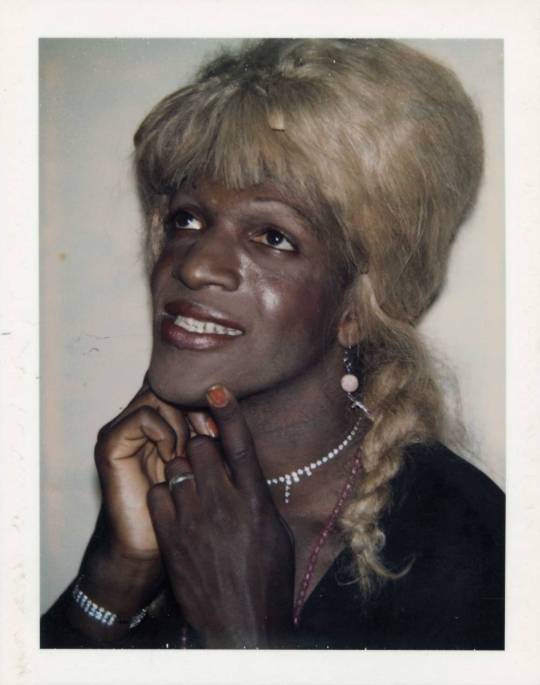

Johnson was born August 24, 1945. A drag queen and sex worker, after moving to New York City from Elizabeth, New Jersey, Johnson is probably best known for participation in Queer Liberation and AIDS activism from 1969 until her death in 1992. While often associated with transgender women, Johnson self identified as gay, a transvestite, and a queen and actively distinguished her identity from the contemporary transsexual community. As for Johnson's gender? Well, pay it no mind. Johnson's activism began in 1969 after being involved in the Stonewall Inn Riots. She is often attributed as being in the riot's vanguard, alongside Zazu Nova and Jackie Hormona. Johnson would later go on to deny this, and is quoted as saying she did not arrive until after the riots had already started. Johnson would later go on to join the Gay Liberation Front and co-found STAR (Street Transvestite Action Revolutionaries), with Silvia Rivera. STAR would open the STAR House in 1970, which acted as a home for gay and trans homeless youths. In 1973 Johnson and Rivera were both temporarily banned by a gay/lesbian committee, from participating in pride parades, because it was said queens were giving the movement "a bad name". This did not deter Johnson. Starting in 1980 Johnson began living with fellow activist, Randy Wicker, and his partner. Johnson, who was HIV positive, would later become Wicker's partner's caregiver as they became terminally ill due to AIDS. After visiting Wicker's partner in the hospital Johnson became dedicated to spending time with AIDS patients and engaged in street actions with groups like ACT UP. Johnson was a deeply religious person throughout her life. Primarily Catholic, Johnson was said to have a very direct and personal relationship with divinity. On July 6, 1992, Johnson's body was found in the Hudson River. Johnson was cremated and after a march down 7th Avenue her ashes were spread in the Hudson. While initially ruled a suicide by the NYPD, this is highly contested to this day, with good reason. In 2002 Johnson's death was reclassified as Undetermined, and efforts in 2012 and 2016 have seen moderate success in getting the case reopened and re-investigated.
In the wake of her death Marsha P Johnson has become a nigh universal icon in queer communities and seemed like a good starting point for Black History Month. Moving forward I hope to focus on people less known, at least in melanin deficient circles. In a perfect world this would be daily, but I sadly don't have the spoons for it. I will effort to post at least 2-3 of these each week and have a list sufficient enough to carry me through February, and a little beyond. I plan on doing Willmer Broadnax next and have a list going that should cover at least the month of February, and hopefully beyond. Corrections and suggestions are welcome and much desired.
#celebrating black queer icons#black history#black history month#black history is queer history#black history is american history#marsha p johnson#marsha pay it no mind johnson#gay liberation front#street transvestite action revolutionaries#STAR Home#stonewall
315 notes
·
View notes
Text

Cover of Come Out! Magazine, Vol 1, Issue 3
#lgbtq community#lgbt#lgbtqia#lgbtq#lgbtq history#lgbt pride#queer community#queer history#queer#come out#gay liberation#gay liberation front#glf#1970s#1970s history
50 notes
·
View notes
Text
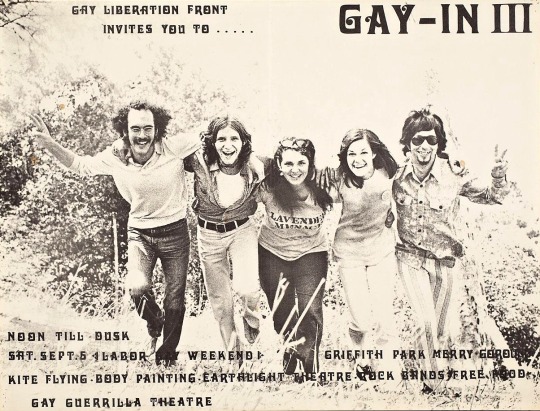
1970
91 notes
·
View notes
Text
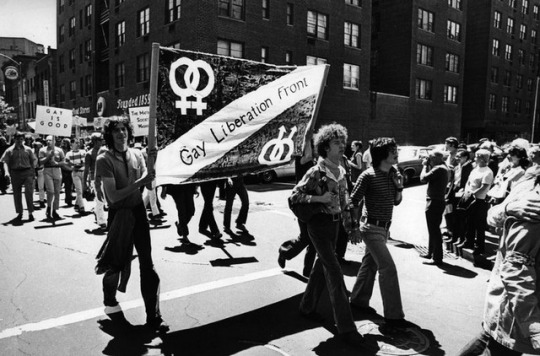
Gay Liberation Front protesters, 1970
12 notes
·
View notes
Photo
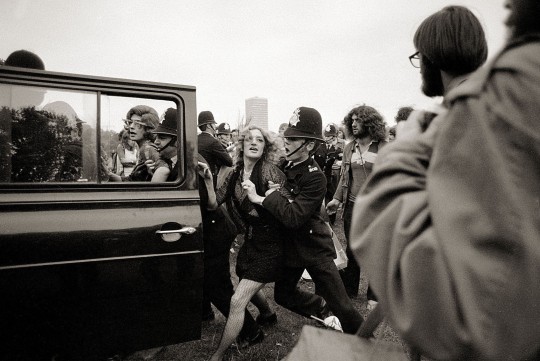



The radical drag queens of the UK Gay Liberation Front
Gay Liberation Front, Radical Drag Queens arrested at Festival of Light Demo, 1971
Members of the Gay Liberation Front demonstrating outside Bow Street Magistrates Court in 1971, supporting Women’s Liberation on trial for protesting Miss World Competition
Stuart Feather conducting a Street Theatre Demo at the Festival of Light, 1971
Come Together, No.15
276 notes
·
View notes
Text

David Davenport and John Wilkinson, two of the founders of the Gay Liberation Front in Portland, Oregon, 1970.
#David Davenport#John Wilkinson#we were always there#gay couple#vintage photo#affectionate men#Gay Liberation Front#1970s icons#portland oregon
27 notes
·
View notes
Text
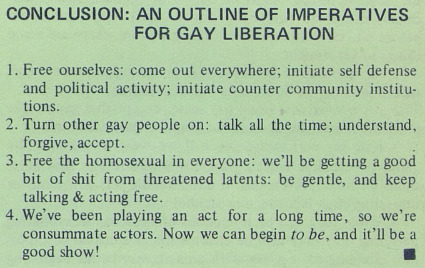
From: Gay Flames no. 9, "A Gay Manifesto" by Carl Wittman, pub. Sept. 1970
456 notes
·
View notes
Text


my zine featuring 25 poems from the gay liberation movement (1970-74) is available on my zine shop with a new cover design
6 notes
·
View notes
Text
A heavy-hitting image of PRIDE art by Ahrimanraven. NEVER forget the victims. Never forget the sacrifices of those who came before. 💔😢💜
OC "Stonewall" by Ahriman 👍
Art ref by yakovlev-vad
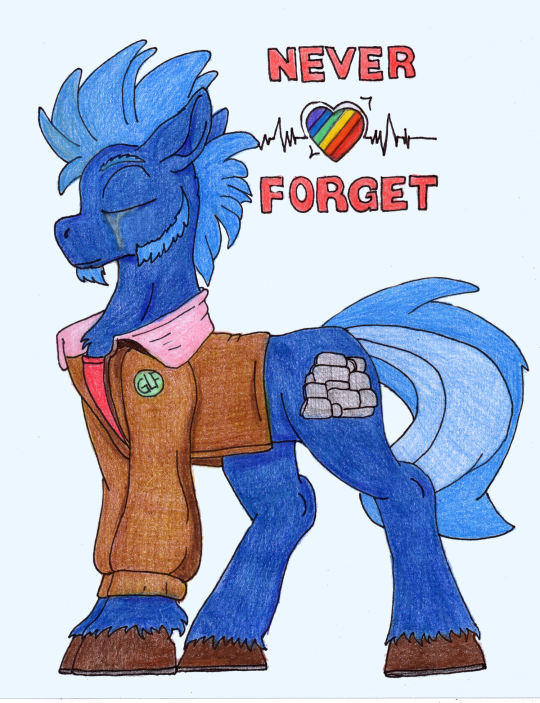
#mlpfim#mlpg4#mlp oc#mlp oc art#ahriman raven#lgbtq#stonewall#lgbt pride#queer pride#lgbtq history#pulse nightclub#gay liberation front#know your history dont repeat it
20 notes
·
View notes
Text
Marsha P. Johnson em uma manifestação da Gay Liberation Front no Hospital Bellevue em Nova York, ca. 1970. Foto por Richard C. Wandel.

20 notes
·
View notes
Link
Everyone, stop what you’re doing right now and read this beautiful article about the life of Chuckie Betz, the last surviving member of Wisconsin’s Gay Liberation Front.
In fall 1971, Chuckie and two other GLF members (Angelo Peaches and Connie Worm) created the Radical Queens. The Queens had a very extensive manifesto, which included the threat “we’re angry queens that are out to get you. And when we do, we’re going to set your hair aflame and scratch your eyes out, fuckers!” However, Chuckie insists they weren’t a very formal or even organized group, and there was never a formal membership or charter. Chuckie is also very clear that he was never trying to be female, or even very effeminate, in his drag appearance.
“This was street drag, as they called it in New York,” said Chuckie. “It was genderfuck drag. Drag as terrorism. Drag as confrontation. We weren’t trying to be pretty. We weren’t trying to be women. We were trying to scare the fuck out of straight people. It was one part woman, one part man, some jewelry, some fur, and some glitter. Huge hats. High heels. Fur purses. Maybe a little acid here and there. We’d crash events dressed up like this, just to shake things up and leave people guessing. Was it worth it? Of course. It was worth every minute to be seen.”
#lgbtqa+#history#queer elders#milwaukee#wisconsin#chuckie betz#gay liberation front#radical queens#drag#genderfuck#i just. my heart.
61 notes
·
View notes
